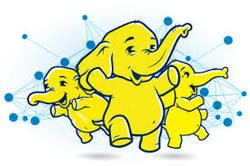
Yet too few organizations realize that addressing data quality is necessary to improve customer satisfaction. A recent Forrester survey shows that fewer than 20% of companies see data management as a factor in improving customer relationships. This is very troubling number.
Not paying attention to data quality can have a big impact both on companies and the customers they serve. Following are just two examples:
Garbage in/garbage out erodes customer satisfaction. Customer service agents need to have the right data about their customers, their purchases, and prior service history presented to them at the right point in the service cycle to deliver answers. When their tool sets pull data from low-quality data sources, decision quality suffers, leading to significant rework and customers frustration.
Lack of trust in data has a negative impact on employees productivity. Employees begin to question the validity of underlying data when data inconsistencies and quality issues are left unchecked. This means employees will often ask a customer to validate product, service, and customer data during an interaction which makes the interaction less personal, increases call times, and instills in the customer a lack of trust in the company.
The bottom line: high-quality customer data is required to support every point in the customer journey and ultimately deliver the best possible customer experience to increase loyalty and revenue. So how can organizations most effectively manage their data quality?
While content management systems (CMS) can play a role in this process, they can't solve the data-quality issue by themselves. A common challenge in organizations in their content management initiatives is the inability to obtain a complete trusted view of the content. To get started on the data-quality journey, consider this five-step process:
1. Don't view poor data quality as a disease. Instead, it is often a symptom of broken processes. Using data-quality solutions to fix data without addressing changes in a CMS will yield limited results. CMS users will find a work-around and create other data-quality issues. Balance new data-quality services with user experience testing to stem any business processes that are causing data-quality issues.
2. Be specific about bad data's impact on business effectiveness. Business stakeholders have enough of data-quality frustrations. Often, they will describe poor data as "missing," "inaccurate," or "duplicate" data. Step beyond these adjectives to find out why these data-quality issues affect business processes and engagement with customers. These stories provide the foundation for business cases, highlight what data to focus on, and show how to prioritize data-quality efforts.
3. Scope the data-quality problem. Many data-quality programs begin with a broad profiling of data conditions. Get ahead of bottom-up approaches that are disconnected from CMS processes. Assess data conditions in the context of business processes to determine the size of the issue in terms of bad data and its impact at each decision point or step in a business process. This links data closely to business-process efficiency and effectiveness, often measured through key performance indicators in operations and at executive levels.
4. Pick the business process to support. For every business process supported by CMS, different data and customer views can be created and used. Use the scoping analysis to educate CMS stakeholders on business processes most affected and the dependencies between processes on commonly used data. Include business executives in the discussion as a way to get commitment and a decision on where to start.
5. Define recognizable success by improving data quality. Data-quality efforts are a key component of data governance that should be treated as a sustainable program, not a technology project. The goal is always to achieve better business outcomes. Identify qualitative and quantitative factors that demonstrate business success and operational success. Take a snapshot of today's CMS and data-quality conditions and continuously monitor and assess them over time. This will validate efforts as effective and create a platform to expand data-quality programs and maintain ongoing support from business stakeholders and executives.
Galaxy Consulting has over 16 years experience helping organizations to make the best use of their data and improve it. Please contact us today for a free consultation!

 RSS Feed
RSS Feed
